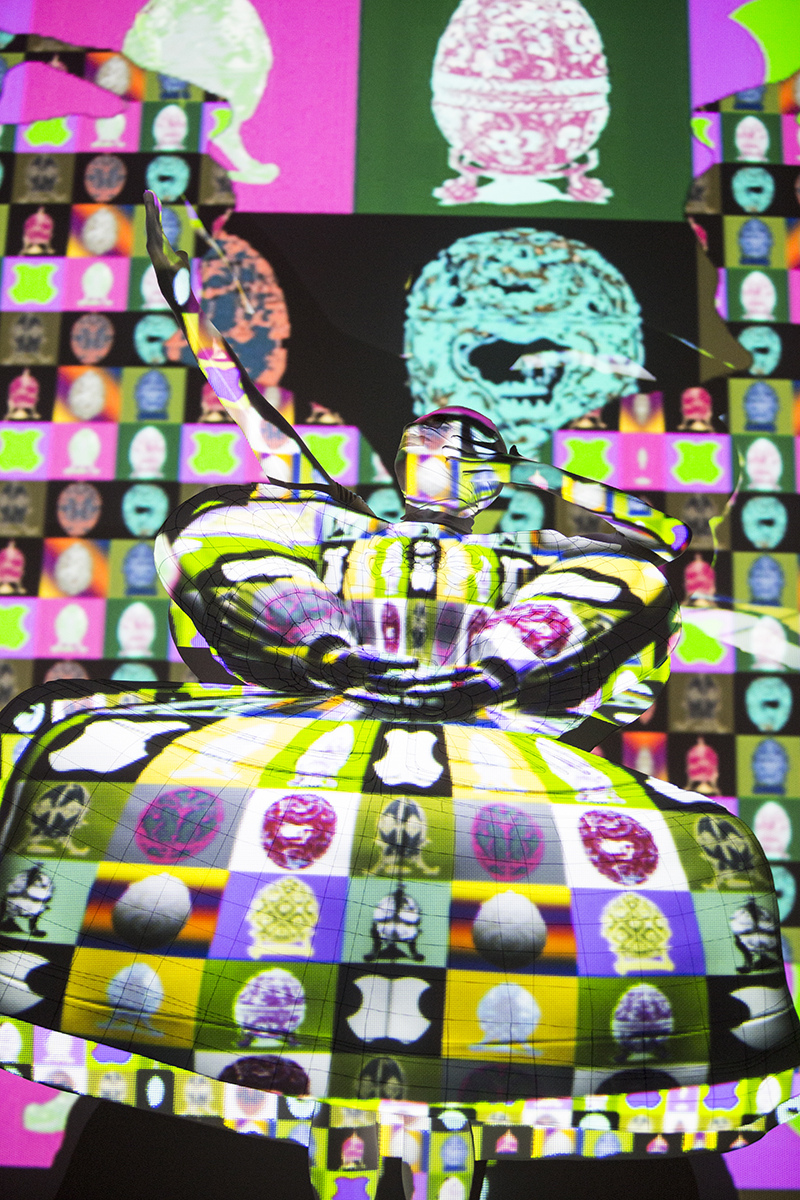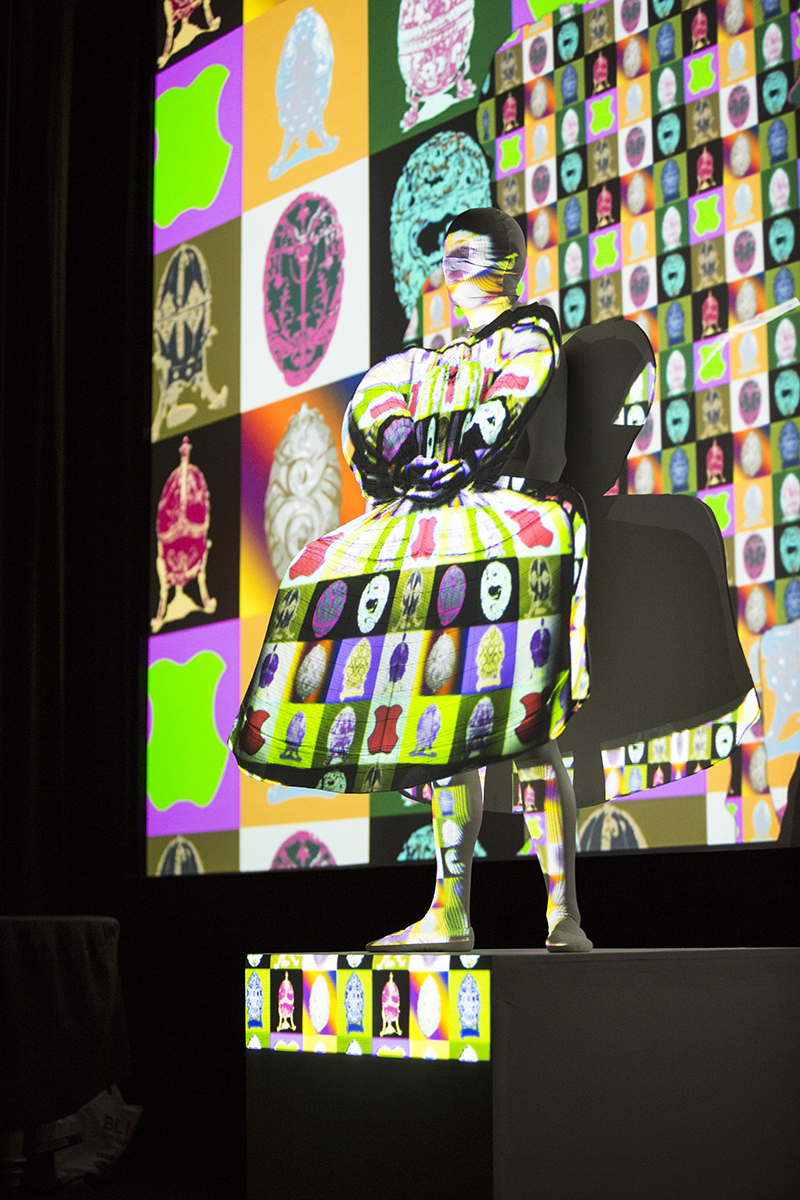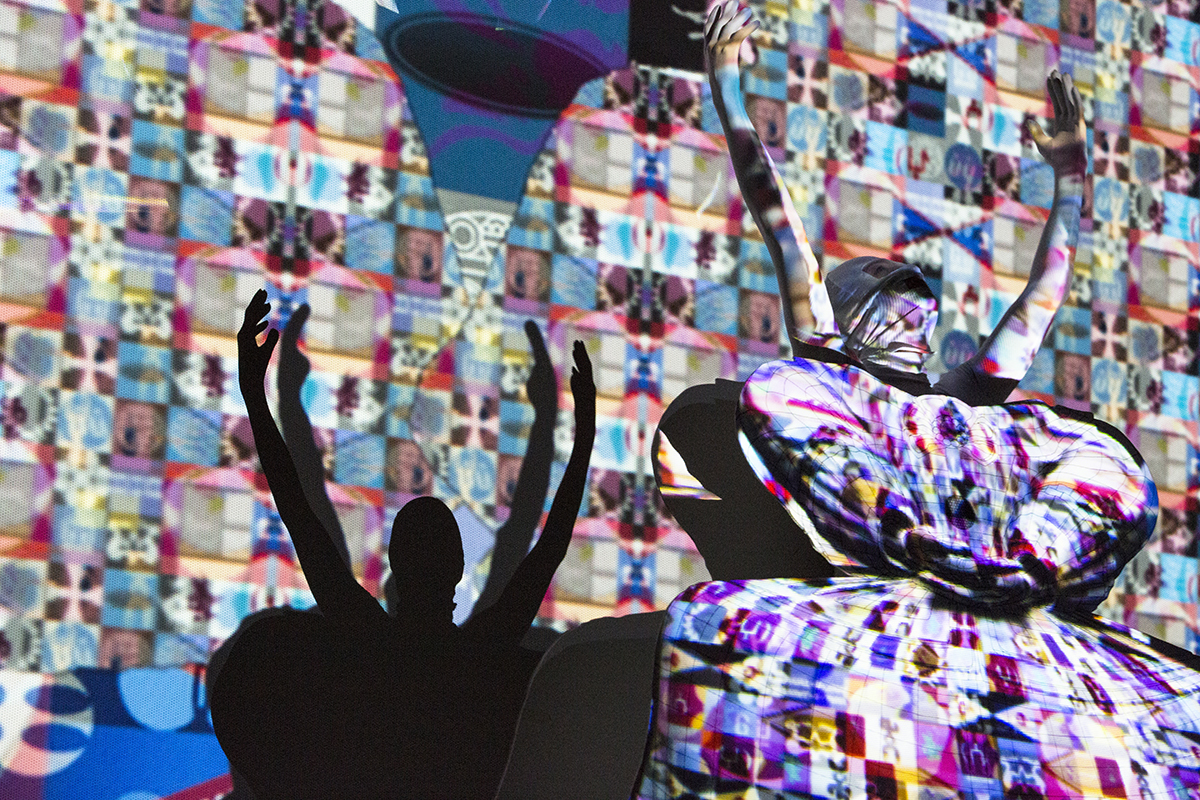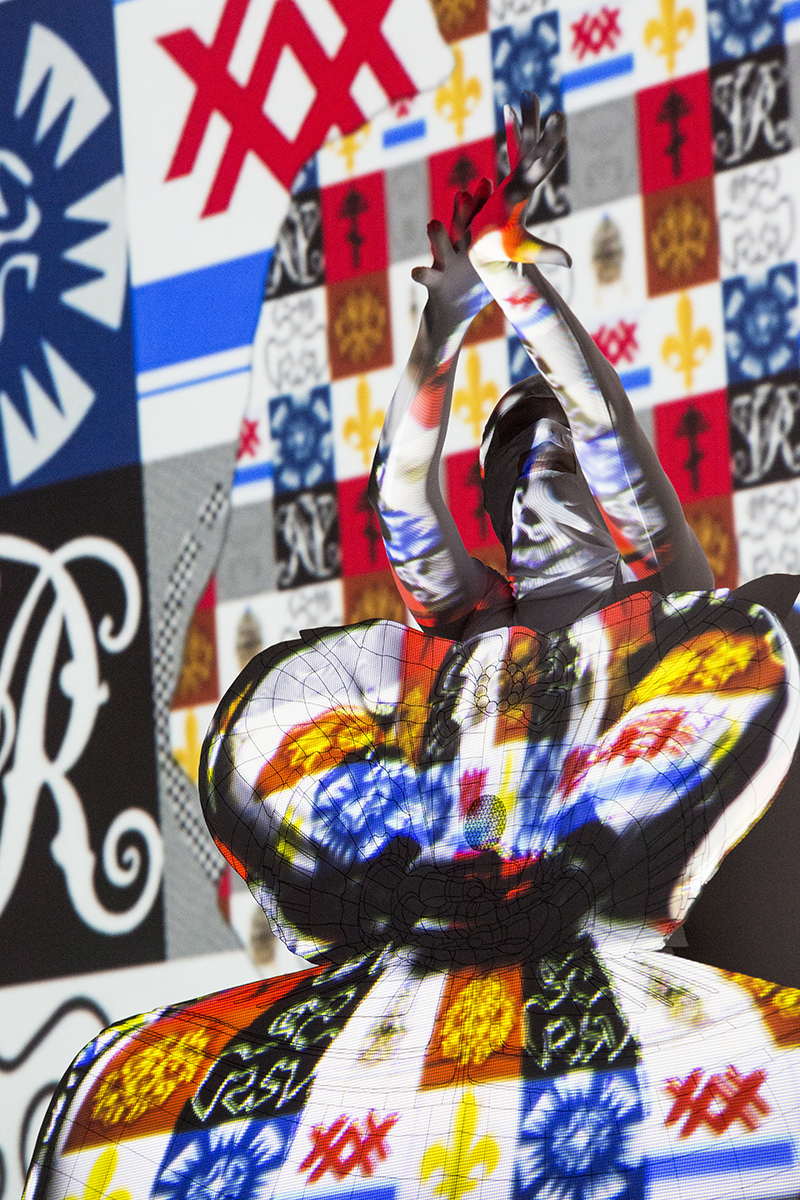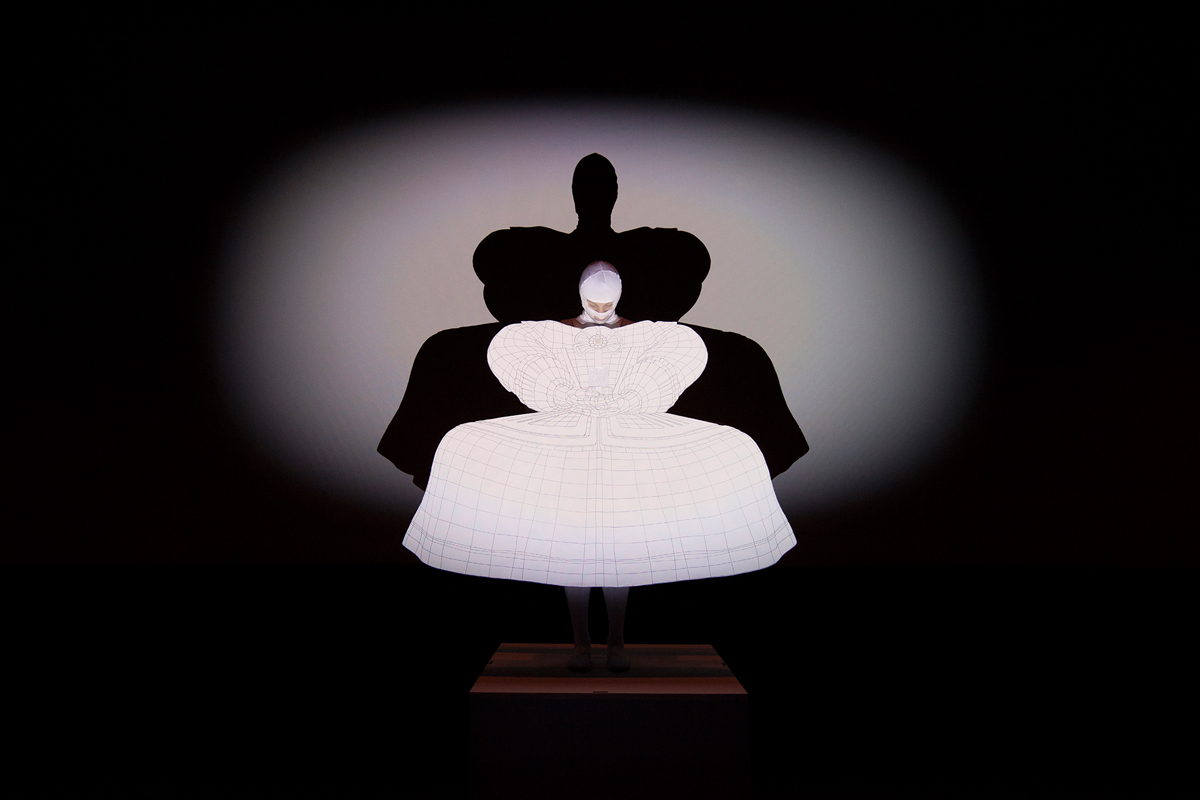
The Dolls (2015)
Single-dancer expanded-cinema version
Performed by Kristina Isabelle
Choreography, Kristina Isabelle
Music, Kurt Hentschläger
The Dolls is driven by the notion that history endlessly renews itself through a process of decadence, decay and rebirth. To embody this, Hart has created rhythmic, animated patterns projected onto dancers wearing paper hand-drawn tutus that function not only as wearable art but also as movie screens for her animations. The music for The Dolls was composed by Kurt Hentschläger, who remixed and expanded on the sound of Empire (2010), Hart’s first mixed-reality performance work. The Dolls also draws on the same themes as Empire .
For The Dolls, Hart used the mathematical computer grid as the central symbol for our technological era. To further this, she also designed a virtual architectural set consisting of digital simulations of historic houses projected on three monumental 25-foot screens. For her set, Hart imagined an abstract computer warehouse filled with these doll houses, all culled from the scrap heap of some future history. Hart uploaded her houses from the 3D models available as shareware, produced and donated by enthusiasts populating Google Earth and stored in its repository - the Google 3D Warehouse. Ten years later, the 3D Warehouse no longer existed and the commercial company that now controls it no longer offers anything for free, including: The Arch of Labna (a Mesoamerican archaeological site and ceremonial center of the pre-Columbian Maya civilization), the Roman Forum-of-Ceasar, Marie-Antoinette’s Le Petit Trianon (the small chateau on the grounds of Louis XIV’s Versaille, where she dressed as a milkmaid with her ladies-in-waiting), a Queen Anne House from Victorian England; the Dragomir Mansion from Bucharest; and the Paulwall House - still standing in our own ruined Detroit.
Like her doll houses, Hart’s paper billboard tutus are also drawn from the scion of a fallen empire: the gowns of Margaret Theresa of Spain, among the last of the Spanish Habsburgs. This child princess was also the central figure in the famous painting Las Meninas, a canonical masterpiece by the great 17th-century court painter, Diego Velázquez, and the subject of many paintings. The algorithmic flickering patterns used in The Dolls were composed of graphics made with the symbols of collapsed empires - from the Faberge eggs of The House of Romanov to the banners and heraldry of Genghis Khan and the Mongol Empire. Distributed among these are also the logos and graphical icons of US multinationals and technology corporations.
